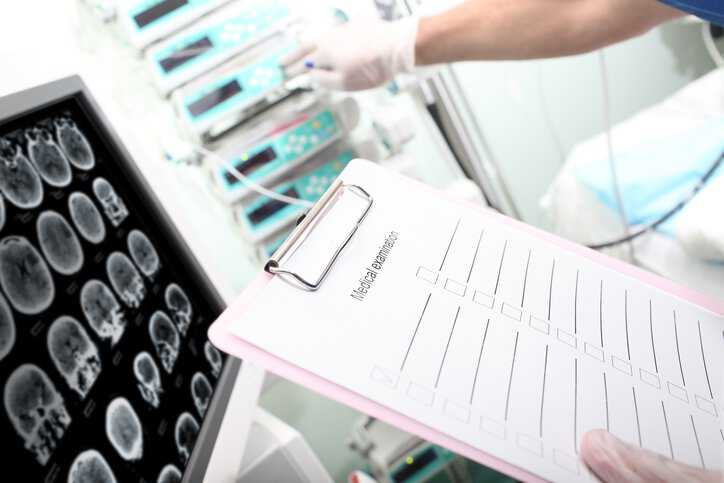Today, approximately 90% of all practicing dentists in the U.S. use some form of digital intra-oral radiographic system for their imaging requirements. Therefore, the need for an effective quality assurance protocol for digital intra-oral radiographic imaging is essential for the care of patients. ADA 1094-2020— Quality Assurance For Digital Intra-Oral Radiographic Systems covers quality assurance protocols for digital radiography in dentistry.
What Is Digital Radiography in Dentistry?
In 1895, X-rays were discovered by Wilhelm Roentgen; in 1987, the first digital radiography system was launched by Dr. Francis Mouyen. Digital radiography is a type of X-ray imaging system that uses sensors to produce images of the mouth. It wasn’t until the 1990s, however, when the digital era in dental radiography experienced widespread adoption.
Digital radiography became popular in dentistry because it produced high-resolution images of a patient’s teeth, gums, and other oral structure in just seconds. It does so by utilizing electronic sensors (which are more comfortable than traditional paper tabs) connected to a computer to capture these high-quality gray-scale images. The images are stored on a computer and can help dentists monitor, diagnose, and treat oral conditions of their patients.
What Is ADA 1094?
ADA 1094-2020 establishes clear and concise protocols to provide adequate quality assurance for digital intra-oral radiography. Quality assurance entails the consistent production of x-ray images of high quality—providing the maximum amount of diagnostic information with minimal radiation exposure to the patient. ADA 1094-2020 also addresses the components involved with any intra-oral digital imaging system:
- Intra-oral x-ray source
- Image display device (computer, monitor, and display-software),
- Digital image acquisition device (solid-state sensor or PSP imaging plate and scanner, and associated acquisition software)
Grayscale in Digital Radiography
In digital radiography, the grayscale is the basis of all images a radiologist reviews on a PACS (picture archiving and communication system) workstation. Each pixel in a digital image has a grayscale value between 0 and 256 that varies from highest intensity (white) to no intensity (black). The value of each pixel in a digital image represents the attenuation of an X-ray beam to tissue. Each pixel is composed of 8-bit depth on today’s modern computers.
Intraoral vs Extraoral Digital Dental Radiographs
There are two main types of dental X-rays: intraoral (the x-ray film is inside the mouth) and extraoral (the x-ray film is outside the mouth).
Intraoral X-rays
Intraoral X-rays, the most commonly taken dental X-ray, provide great detail. They are used to detect cavities, check the status of developing teeth and monitor teeth and bone health. There are several types of intraoral x-rays, such as:
- Bitewing X-rays: show details of the upper and lower teeth in the mouth. Bitewing X-rays are used to detect decay between teeth and changes in bone density caused by gum disease. They can also determine the fit of dental crowns or restorations and the marginal integrity of tooth fillings.
- Periapical (limited) X-rays: show the whole tooth from the crown, to beyond the root where the tooth attaches into the jaw. Periapical X-rays are used to detect root structure and surrounding bone structure abnormalities.
- Occlusal X-rays: track the development and placement of an entire arch of teeth in either the upper or lower jaw.
Extraoral X-rays
Extraoral X-rays do not provide the detail of intraoral X-rays, and as such they are not used to identify individual tooth problems. Instead, they are used to detect dental problems in the jaw and scull. Specifically, they detect impacted teeth, monitor jaw growth and development, and identify potential problems between teeth, jaws and temporomandibular joints (TMJ), or other facial bones. There are several types of extraoral x-rays, such as:
- Panoramic (Panorex) X-rays: show the entire mouth area—all the teeth in both the upper and lower jaws—on a single x-ray image. Panoramic X-rays are used to plan treatment for dental implants, detect impacted wisdom teeth and jaw problems, and diagnose bony tumors and cysts.
- Tomograms: show a particular layer or slice of the mouth and blur out other layers. This X-ray examines structures that are difficult to clearly see because other nearby structures are blocking the view.
- Multi-slice computed tomography (MCT): show a particular layer or “slice” of the mouth while blurring all other layers. MCT X-rays are useful for examining structures that are difficult to see clearly.
- Dental computed tomography (CT): a type of imaging that looks at interior structures in 3-D (three dimensions). This type of imaging is used to find problems in the bones of the face such as cysts, tumors, and fractures.
- Cephalometric projections: show an entire side of the head. This X-ray looks at the teeth in relation to the jaw and profile of the individual. Orthodontists use this X-ray to develop each patient’s specific teeth realignment approach.
- Sialography: is used to identify salivary gland problems, such as blockages or Sjogren’s syndrome—an autoimmune disease that impedes saliva and tear production.
- Cone beam computerized tomography (CBCT): shows the body’s interior structures as a three-dimensional image. CBCT is used to identify facial bone problems, such as tumors or fractures.
- MRI imaging: takes a 3-D view of the oral cavity including jaw and teeth. MRI imaging is ideal for soft tissue evaluation.
ADA 1094-2020— Quality Assurance For Digital Intra-Oral Radiographic Systems is available on the ANSI Webstore.
